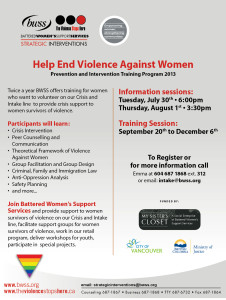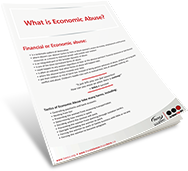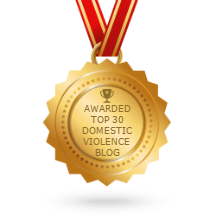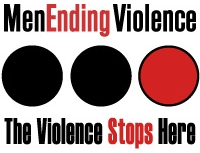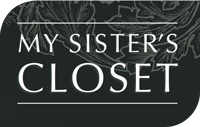When Women Became Victims
Risk Assessment E-Learnings
by Angela Marie MacDougall
At Battered Women’s Support Services, we have been looking for and attempting to create accessible resources and training for front line anti-violence workers. We have been developing Strategic Interventions and looking at different models from other regions around the world. A women’s coalition in Ontario has developed accessible training and other resources for their members.
OAITH is a provincial coalition founded by women’s advocates in 1977. Their membership includes community based women’s service organizations, first and second stage transition houses. As a coalition of women’s serving organizations they work to educate and promote change in all areas that abused women and their children identify to their freedom from violence. We appreciated that the coalition comfortably declares that they operate from an integrated, feminist, anti-oppression perspective on violence against women, recognizing that violence and abuse against women and children occurs as a result of unequal power and status of women and children in society. They highlight that racism and oppression of women is a form of violence. They advocate for the strong inclusion of women who access services to inform service delivery and related policies.
Their commitments appear on their website and summarized here:
- Removing barriers to equality for all women and children
- Ensuring the voices and experiences of all abused women are heard when working for social change
- Increasing awareness through education, public advocacy and empowerment for OAITH members agencies
- Assisting agencies in offering support and services to women
- Offering training of OAITH members
- Working with equality-seeking allies in the community to end all forms of violence and oppression of women.
Compare and Contrast Context – Ontario and British Columbia
After reviewing the domestic homicides of Arlene May in 1996 and Gillian Hadley in 2000, Ontario prioritized risk and threat assessments for law enforcement and related systems as well as co-ordinated approaches between all working with domestic violence cases. A conference was held in Hamilton, Ontario in 2010 Reducing the Risk of Lethal Violence. Collaboration in Threat Assessment and Risk Management from Theory to Practice. This prompted OAITH to develop E-Learning resources for front line anti-violence workers, working in community-based women’s organizations, first and second stage transition houses.
In British Columbia, the BC Domestic Violence Action Plan was created and the Violence Against Women in Relationships Policy was amended December 2010 with risk assessment and evidence based risk assessment investigations leading the way forward. The plan and the revision were prepared through consultations between the BC ministries of Public Safety and Solicitor General, Attorney General and Children and Family Development with an emphasis on integrated services, that is, the need for a coordinated response to domestic violence among all agencies involved including referral to community-based victim service organizations where they exist. The ministries identified the need for change following the Lee/Park coroner’s inquest and the Representative for Children and Youth’s report on the death of Christian Lee. Christian Lee, his mother Sunny Yong Sun Park, and his maternal grandparents, Kum Lea Chun and Moon Kyu Park were killed by his father in 2007.
UPDATED
Here are the suggested joint recommendations to the coroners jury, very thoroughly developed by OAITH and the Metropolitan Action Committee on Violence Against Women and Children (METRAC) from July 1998 regarding the domestic homicide of Arlene May.
Here is the report to the chief coroner of British Columbia on Findings and Recommendations of the Domestic Violence Death Review Panel, May 2010 prepared by BC Ministry of Public Safety and Solicitor General.
The Risk Assessment E-Learning Modules for Front-line Anti-Violence Advocates
OAITH has prepared four modules for front-line anti-violence advocates: Feminist Analysis of Risk and Risk Assessment, Justice System Perspective on Risk Assessment Tools, Risk Assessment in Partnership with Women, and Safety and Advocacy Planning.
It was encouraging to see OAITH attention to a Feminist Analysis of Risk and Risk Assessment module. This module is very validating of the work of women’s anti violence advocates over the years. In particular, the module examines current risk assessment practices which have largely been designed for law enforcement, legal systems and health systems which place the women at the centre as victim with the service providers surrounding her as experts. The application of a feminist analysis of risk and risk assessment was refreshing. The module encourages reviewing concepts of risk empowering front line anti-violence workers to analyze and develop models that make sense for the women they serve and the work in their communities. The module details what risk assessments can and can’t do.
The Justice System Perspective on Risk Assessment Tools module provides an important overview and feminist analysis of the justice system risk assessment tools. The module is de-mystifying, defining the difference between safety, threat, lethality and risk assessments, provides an inventory of spousal violence risk assessment tools including SARA and B-Safer developed by forensic psychologists Randy Kropp and Steven Hart and popular with police services in BC.
The module includes Danger Assessment by Jacquelyn Campbell, Danger Assessment 2004 and a website dedicated to Danger Assessment that can be completed with women. The module provides information for front line anti violence workers supporting women going through the risk assessment process with police services and legal/justice systems. Women Abuse Council of Toronto has High Risk Assessment Training by Jacquelyn Campbell on their website.
Risk Assessment in Partnership with Women module provides an overview of how front-line anti-violence workers can support identify risk to strategize with women, emphasizing that risk assessment shouldn’t be a mysterious process. The module validates and recognizes that front-line anti-violence advocates have always conducted risk assessments if not in a standardized and/or formalized way.
Safety and Advocacy Planning module examines how anti-violence workers can work with women to create safety and advocacy plans and it reviews safety plans available online. The module includes a section on safety planning with children by Lundy Bancroft. The Safety Not Justice section of the module has critical significance to our front-line anti-violence work in BC presently.
Risk Assessment and Big “A” Advocacy
The four modules validate the broad based advocacy that feminist advocates do all the time. Our detractors often challenge our work by suggesting that we have no proof for the claims we make based on our work with women. In reality in the past two decades women’s advocates have rarely had the time or resources to conduct research, additionally, we may not have felt empowered to embark on systemic and institutional advocacy, believing it was some other organization’s responsibility, not within our mandate or too daunting. Risk assessment provides an opportunity for our front-line advocacy because we collect loads of anecdotal information that if organized effectively can be identified as research. Risk assessment provides an opportunity where our work with women can help us identify systemic and social issues that as feminist advocates we can attempt to address with our broad-based advocacy. That through identifying the facts, the consequences and the possible solutions so the data collected through risk assessments can assist us with our larger systemic and institutional advocacy. At Battered Women’s Support Services we have used this process to do the systemic and institutional advocacy with the increasing instances of battered women arrests. In the first half of this month we have seen four new cases representing a 200% jump in referrals. In advance of the adoption of the White Paper on Family Relations Act: Reform for new Family Law Act, Battered Women’s Support Services is identifying areas for systemic and institutional advocacy.
Substance Use and Harm Reduction
Substance use and Harm Reduction in women’s services, transition house/shelter service provision has been a challenging service delivery issue in BC and Ontario for some time. There has been much debate and in some aspects has created polarized political positioning within the transition house and shelter providers. OAITH has produced “Safe For All” Harm Reduction training video for front line service providers particularly transition houses/shelters, who may be thinking about harm reduction and policy development. The video looks at safety, stigma, trauma and parenting policies also. The video is a good starting place for anyone looking for information on harm reduction and violence against women. Battered Women’s Support Services is examining current research and has developed training curricula on the harm reduction continuum and working with women survivors of violence.
If you are a woman dealing with intimate partner violence and/or you’re working in a community based women’s organization, community-based victim service organization, first or second stage transition house in British Columbia or if you are an interested community member in any region, we would love to hear your thoughts on this post and the resources presented here. Please comment here or email us at endingviolence@bwss.org.


